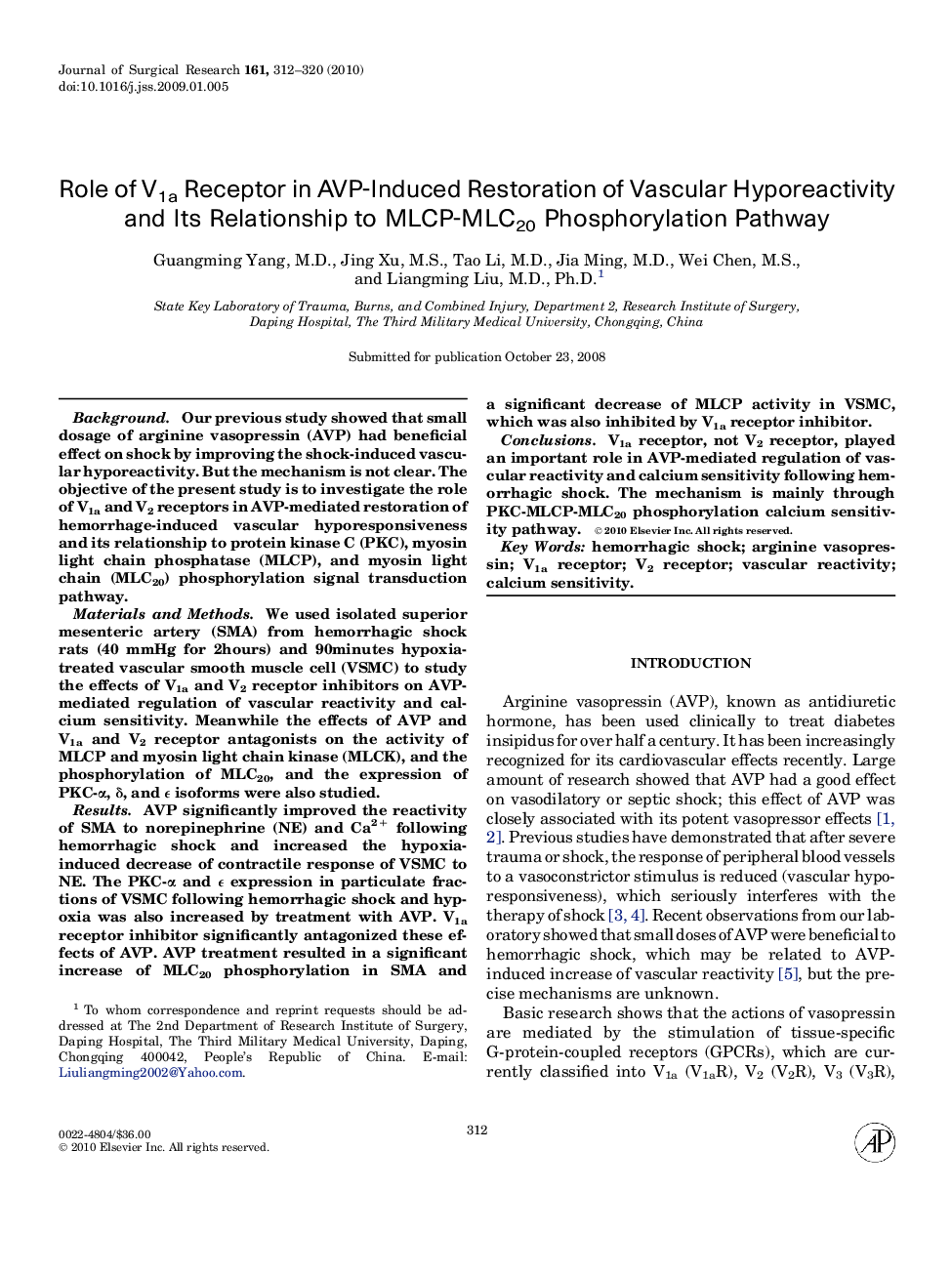| کد مقاله | کد نشریه | سال انتشار | مقاله انگلیسی | نسخه تمام متن |
|---|---|---|---|---|
| 4302878 | 1288465 | 2010 | 9 صفحه PDF | دانلود رایگان |

BackgroundOur previous study showed that small dosage of arginine vasopressin (AVP) had beneficial effect on shock by improving the shock-induced vascular hyporeactivity. But the mechanism is not clear. The objective of the present study is to investigate the role of V1a and V2 receptors in AVP-mediated restoration of hemorrhage-induced vascular hyporesponsiveness and its relationship to protein kinase C (PKC), myosin light chain phosphatase (MLCP), and myosin light chain (MLC20) phosphorylation signal transduction pathway.Materials and MethodsWe used isolated superior mesenteric artery (SMA) from hemorrhagic shock rats (40 mmHg for 2hours) and 90minutes hypoxia-treated vascular smooth muscle cell (VSMC) to study the effects of V1a and V2 receptor inhibitors on AVP-mediated regulation of vascular reactivity and calcium sensitivity. Meanwhile the effects of AVP and V1a and V2 receptor antagonists on the activity of MLCP and myosin light chain kinase (MLCK), and the phosphorylation of MLC20, and the expression of PKC-α, δ, and ε isoforms were also studied.ResultsAVP significantly improved the reactivity of SMA to norepinephrine (NE) and Ca2+ following hemorrhagic shock and increased the hypoxia-induced decrease of contractile response of VSMC to NE. The PKC-α and ε expression in particulate fractions of VSMC following hemorrhagic shock and hypoxia was also increased by treatment with AVP. V1a receptor inhibitor significantly antagonized these effects of AVP. AVP treatment resulted in a significant increase of MLC20 phosphorylation in SMA and a significant decrease of MLCP activity in VSMC, which was also inhibited by V1a receptor inhibitor.ConclusionsV1a receptor, not V2 receptor, played an important role in AVP-mediated regulation of vascular reactivity and calcium sensitivity following hemorrhagic shock. The mechanism is mainly through PKC-MLCP-MLC20 phosphorylation calcium sensitivity pathway.
Journal: Journal of Surgical Research - Volume 161, Issue 2, 15 June 2010, Pages 312–320